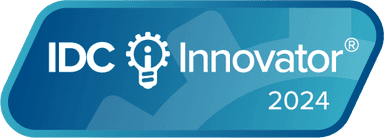Pricing OperationsOct 06, 2022
How m3ter deals with billing complexities for customers
Our first two articles in this series walked you through the effects of usage-based pricing on billing operations and what your financial teams need to know about implementing a UBP strategy. Now, we’ll illustrate how m3ter can help.
After building a business (GameSparks) that relied on usage-based pricing (UBP), selling that business to AWS, and seeing UBP as done by the masters, you could say we're well-acquainted with the additional complexities that accompany a usage-based pricing strategy. Running a usage-based billing process involves a multitude of steps, and the more complex and nuanced your pricing is, the more work that’s required to calculate what goes on a customer’s bill.
Our first two articles in this series walked you through the effects of UBP on billing operations and what your financial teams need to know about implementing a UBP strategy. Now, we’ll illustrate how m3ter easily handles any billing complexity.
m3ter’s solution to usage-based billing for SaaS
m3ter was built to tackle the pricing complexities that are typical of scaling and enterprise SaaS businesses – those companies who have achieved success, are now focused on growth, and where Sales has an increasing influence on results. We do this by anticipating the needs of – and bridging the gaps between – Finance, Operations, Product, Engineering and Sales teams at four key stages in the usage-based billing process: metering, rating, billing, and integrations.
1) Metering usage
The metering stage involves ingesting, normalizing, transforming, and storing usage and cost data at scale.
m3ter does this by allowing you to flexibly configure usage tracking that is specific to your business. You can apply custom logic on the fly at ingest and capture multiple attributes per measurement, depending on what you need.
As mentioned above, we do this at scale, ingesting tens of thousands of measurements per second. This data can be taken from any source – whether API, file-based API, message queue, or Segment – and with full idempotence support.
2) Rating: Applying pricing to usage data
The rating stage is about applying pricing to usage data. And since every business is different, m3ter can support a broad range of pricing models and billing logic – no matter what your model is.
We offer powerful features to define how m3ter processes raw usage data to create billable events:
- Apply custom logic to any measurement attribute or combination thereof
- Deploy a wide range of any aggregation functions (SUM, MAX etc)
- Segment based on measurement attributes to avoid pricing SKU proliferation
Our broad library of pricing logic options support any combination of recurring subscriptions and consumption-based elements. For the latter, you can apply a range of pricing models, including volume pricing, tiered pricing, or stair step pricing. You can set allowances and overages, one-time fees, and standing charges at a granular level. You can bundle different products and discounts based on combinations. And complex credit-based systems like Snowflake’s are elegantly accommodated.
Finally, you have sophisticated billing and post-rating logic options
- Decide when to bill (any period, frequency, or billing date).
- Choose whether billing is in advance or arrears.
- Operate complex prepayment and drawdown systems.
- Accommodate complex parent/child account structures.
- Apply discounts and credits to bills on an ad hoc basis.
3) Reviewing billing amounts & moving to invoicing
This stage involves reviewing and approving bill amounts and delivering them to downstream invoicing systems.
m3ter covers all the key capabilities:
- Approval workflows – m3ter will automatically calculate bills based on any schedule, including any unique, customer-specific billing dates. Bills are then available for review by BillingOps teams via a three-state workflow (pending, approved, and locked).
- Access management controls – Assign access privileges by user and task.
- Querying and validating data – With Data Explorer, you have access to powerful querying of data, from usage to spend to drawdown against commitments.
- Revenue recognition – Our RevRec module enables you to configure and automate your revenue calculations on a per-customer basis, and then deliver them to the general ledger.
4) Integrations for downstream systems
The final stage is integration with your downstream systems. m3ter can be seamlessly integrated with your existing quote-to-cash tooling, with native integrations currently offered for NetSuite, Salesforce, Stripe, Paddle, Chargebee, QuickBooks, and Xero. These are easily configurable, transparent, and robust syncs which only need to be set up once.
m3ter’s native integrations also include a UI for non-technical users, enabling them to manage data object mappings, configuration, and review sync processes.
Need something different? If you have a system not covered by our native integrations, our API-first framework with pre-built object mappings simplifies integration and automation to other tools. Plus, we have an extensible object relationship model which enables seamless translation to and from other systems.
Automated, error-free billing with m3ter
Billing is never simple, but m3ter ensures the complexities can be abstracted in the right way, allowing you to deploy the right usage-based pricing for your business without compromising control. m3ter is your complete solution to fill the gap in your quote-to-cash stack for complex bill calculation.
Implementation is easier than you might expect – it’s just four steps to get up and running:
Ready to simplify billing? See a demo, get answers to your questions, and learn our best practices 1:1. Let’s Talk
You might also like…
Find out how your business can automate usage-based pricing today
See a demo, get answers to your questions, and learn our best practices.
Schedule a demo


